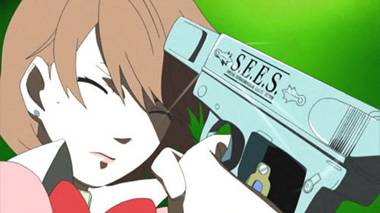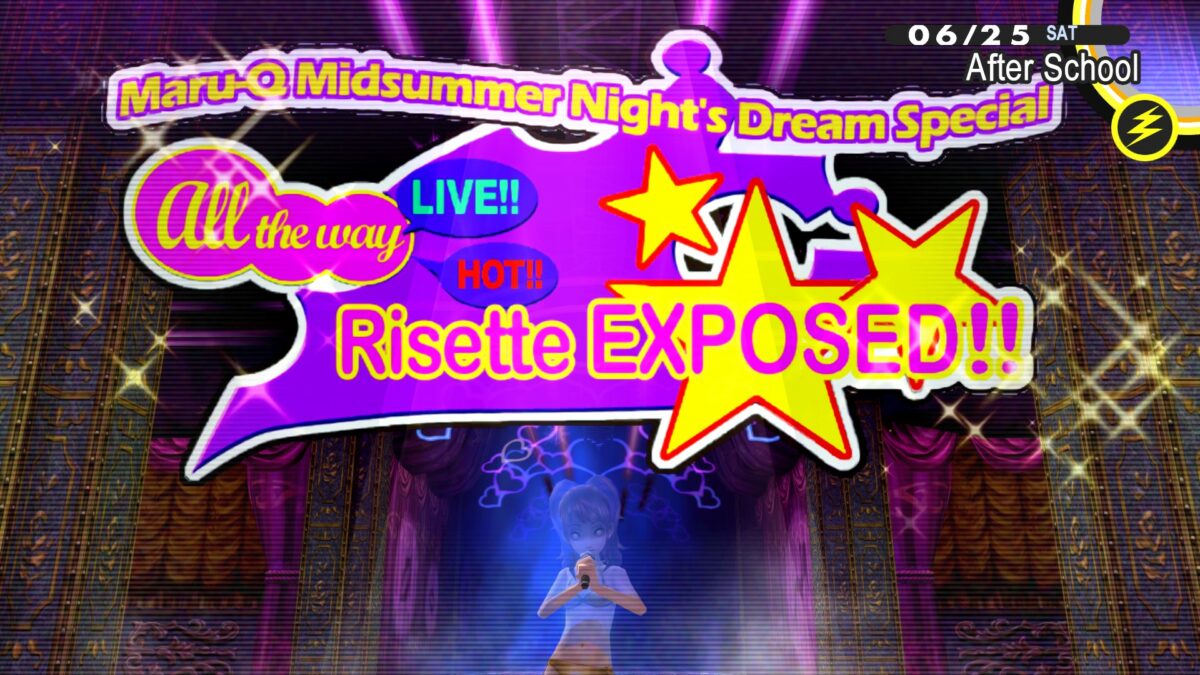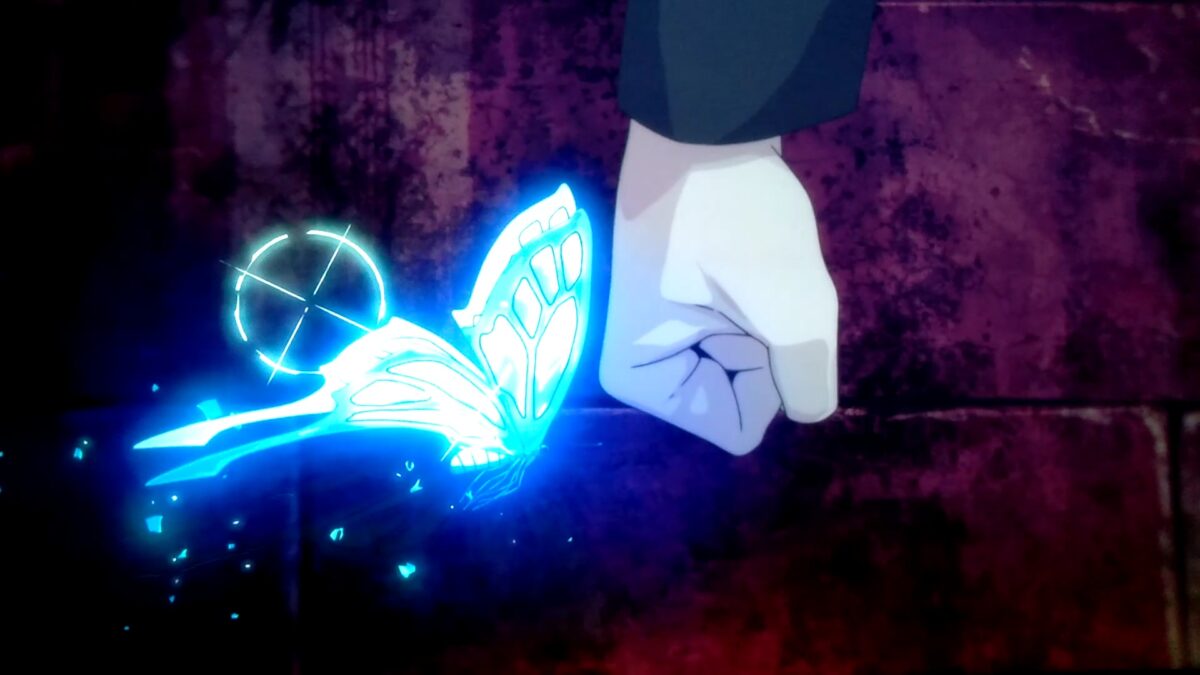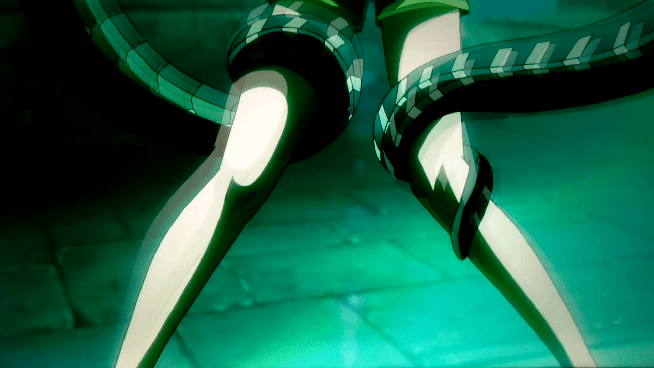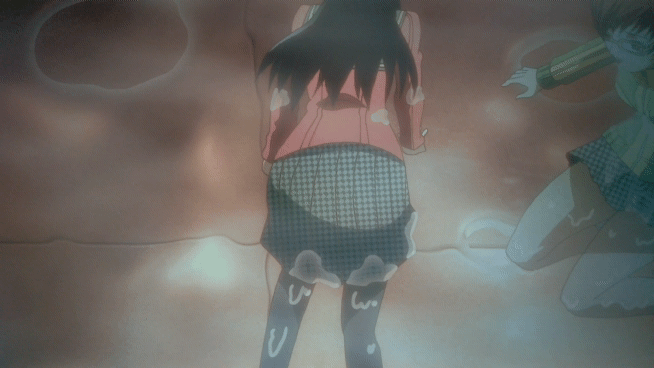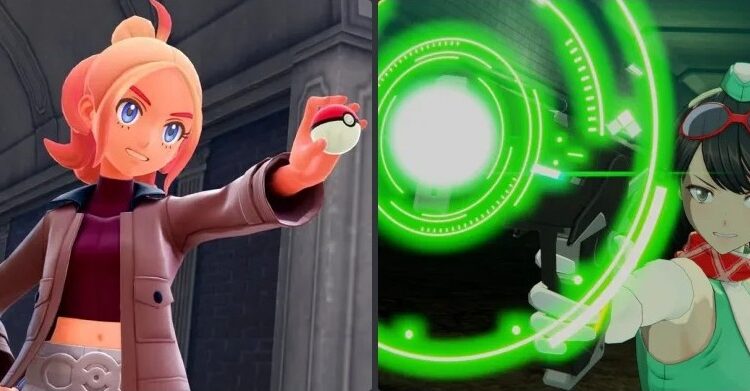Growth and exploring our emotions and social morality are themes at the heart of the Persona video game series. “Persona” is Latin for “mask”, and the Jungian definition of “persona” is a major theme throughout. In this school of thought, a persona has an ideal self and can present multiple personas to the world throughout their lifetime. An overreliance on a persona can, however, cause the loss of the “true self.” This is probably why the image of a blue butterfly features throughout the series, implying that metamorphosis is a healthy part of growth.
Each Persona game explores its own unique themes too. Persona 1 and 2, for example, revolve around the concepts of “real” and “ideal”. “Ideal” is how we wish the world was, while “real” is the truth we cannot or shouldn’t turn away from.
The Velvet Room
Persona 3’s theme is death and mortality. The phrase: “Memento mori. Remember, you will die. Remember your death,” appears during the game’s intro. Simply put, we all inevitably die. Throughout the game, the protagonist meets people who have lost someone or are dealing with their own mortality.
Yukari Takeba is one such person. After the death of her father ten years prior to the game, Yukari becomes estranged from her mother. This is because she’s dating again, which Yukari sees as her mom being disloyal to her dad. Yukari, still grieving, hasn’t moved on or realized that her mother has. Yukari cares for people but is afraid of betrayal. Eventually, through her bond with the protagonist, she finds closure and begins fixing the relationship with her mother.
The theme also permeates the setting of the game. During the Dark Hour, a secret time that starts at midnight, humans — except for persona users — confined in coffins litter the world. The main dungeon is called Tartarus, an allusion to the place beneath the Greek underworld, Hades. This Tartarus, however, reaches toward the sky.
The method for summoning a persona in this game is the Evoker; a gun that summons a persona when placed against the head. It reminds the user of their own mortality, which instills both a sense of fear and acceptance. These feelings are essential for summoning personas.
Some of the main cast’s personas come from Greek myth. For example, the protagonist has Orpheus as his base persona, but can inadvertently summon Thanatos as seen early in the game and movie. In Greek myth, Orpheus went to the underworld to bring back his wife. Thanatos is the god of peaceful death, and his appearance foreshadows the game’s ending. Overall, the Persona series uses the tarot meaning of death as transition or deep change. Any loss that one suffers is a time of self-assessment.
The Midnight Channel
Underneath its murder mystery story, Persona 4 is about accepting our hidden selves and seeking the truth amidst misinformation and rumors. In the rural town of Inaba, the protagonist and his friends investigate the urban legend of the Midnight Channel. The rumor goes that at midnight on rainy days, you’ll see the person you love appear on TV. The protagonist and his friend enter the TV and discover another world where everyone has a place that represents their repressed side.
The characters Kanji Tatsumi and Naoto Shirogane represent this well. Kanji’s place is called the “men’s only” Steamy Bathhouse. It reflects the repressed side of himself called a shadow. Kanji’s shadow represents his feminine side, anima in Jungian terms, or his perception of femininity. For Kanji, that means activities such as sewing, knitting, or cooking, which he excels at and enjoys. He fears women see him as “unmanly”, so he avoids them to hang around guys. When he’s around men, however, he worries they’ll question his sexuality. When Kanji confronts his shadow, its over-the-top stereotypical actions cause him to reject it, resulting in a battle. His shadow calls forth minions called Nice Guy and Tough Guy. The Tough Guy is the façade that Kanji puts up in the real world while the Nice Guy is who he is underneath. Eventually, Kanji accepts his shadow and spends the game learning to open up and fearlessly show his true self to the world.
Persona 5’s story uses picaresque story elements and phantom-thief-inspired characters to deliver its message about freedom and society’s open secrets. Picaresque stories feature roguish characters who use their wit and cunning to skirt the law and expose the crimes of those in power. Phantom thieves are criminals who act with a code of honor and steal to help others or take down another criminal. A contemporary example of a picaresque character would be Han Solo while a phantom thief is Lupin the Third.
In the world of Persona 5, corruption seeps into all aspects of society, including the school the protagonist attends. This corruption causes hopelessness and keeps people locked in their assigned roles. It also, disguised as one of the seven deadly sins, is an open secret that everyone turns a blind eye to. Individuals who are the sources of corruption have palaces which are areas in their own minds where their twisted desires live. The first example happens in the protagonist’s school whose name, Shujin, is Japanese for prison. This part of the game really sold me on it.
The school’s volleyball coach, Kamoshida, is physically and emotionally abusive, and sexually harasses students. Kamoshida, a volleyball gold medalist, has the school’s respect despite all the rumors about him. His volleyball team is in a constant state of misery, but everyone overlooks it as fatigue. Kamoshida’s palace takes the form of a castle, which is how he views the school, with his shadow as king. The volleyball team are slaves and subjected to various volleyball-themed tortures. Once the protagonist and friends defeat his shadow, the real Kamoshida confesses to his crimes. This causes the teachers and some students to face the consequences of their actions.
Choice
The freedom to choose is the central theme of the game. Persona 5’s protagonist and his friends, known as The Phantom Thieves, are outsiders in society and within their school. The personas they manifest are those representing famous phantom thieves like Arsène Lupin and Goemon Ishikawa, or social pariahs like Pope Johanna. These personas represent the freedom to live by one’s own rules and the hard choices that come with such freedom. Humanity has given up its right to choose and left it to a higher power because it’s easier. This confines the shadows in a prison of their own design. The Phantom Thieves fight against the god seeking to grant humanity’s desires and they try to prove to the world that you should take control of your own destiny. Persona 5 is about finding the path that’s right for you while never turning a blind eye to others’ suffering.
In part three, we’ll look at the music of the Persona video game series.


